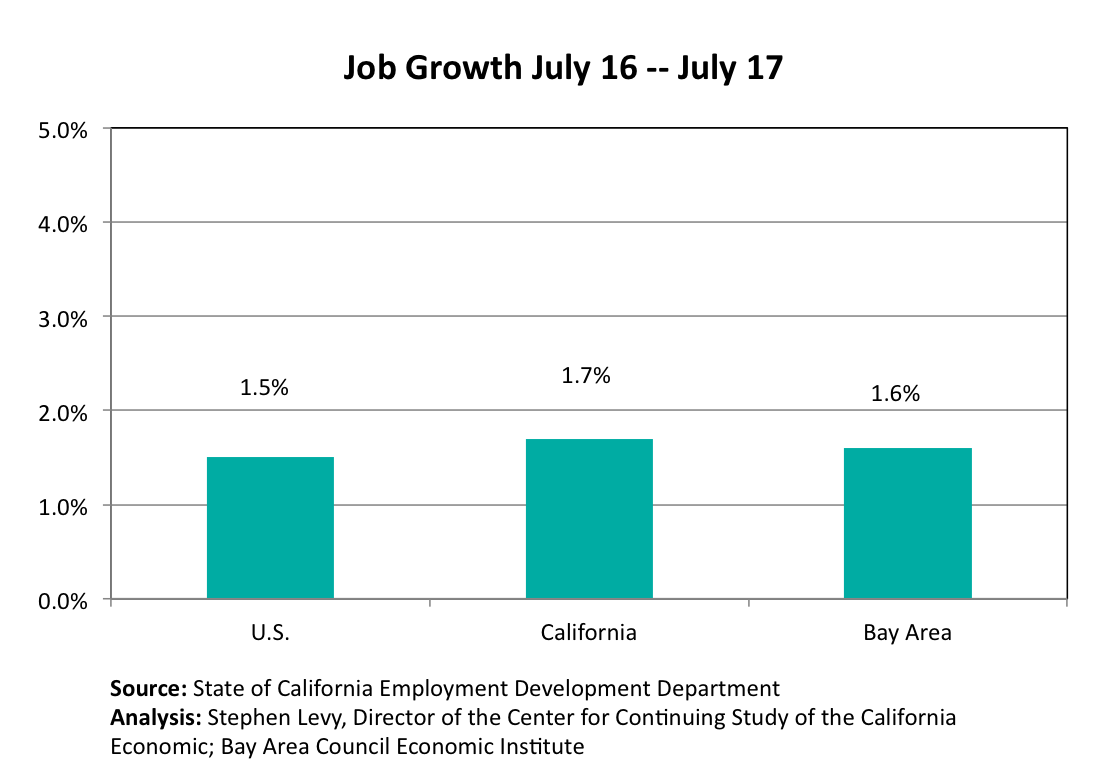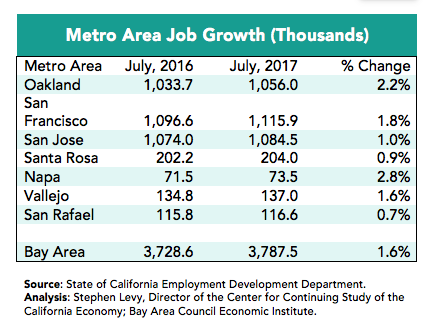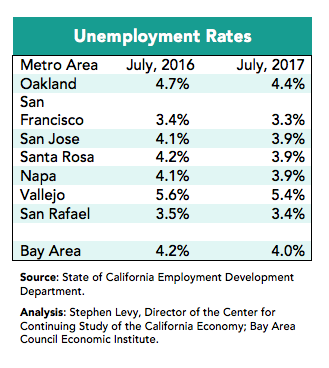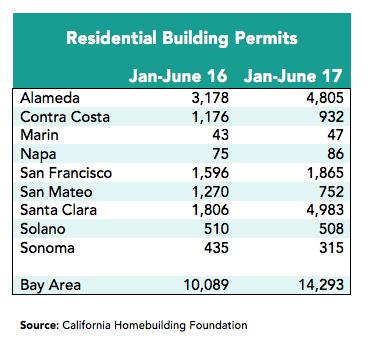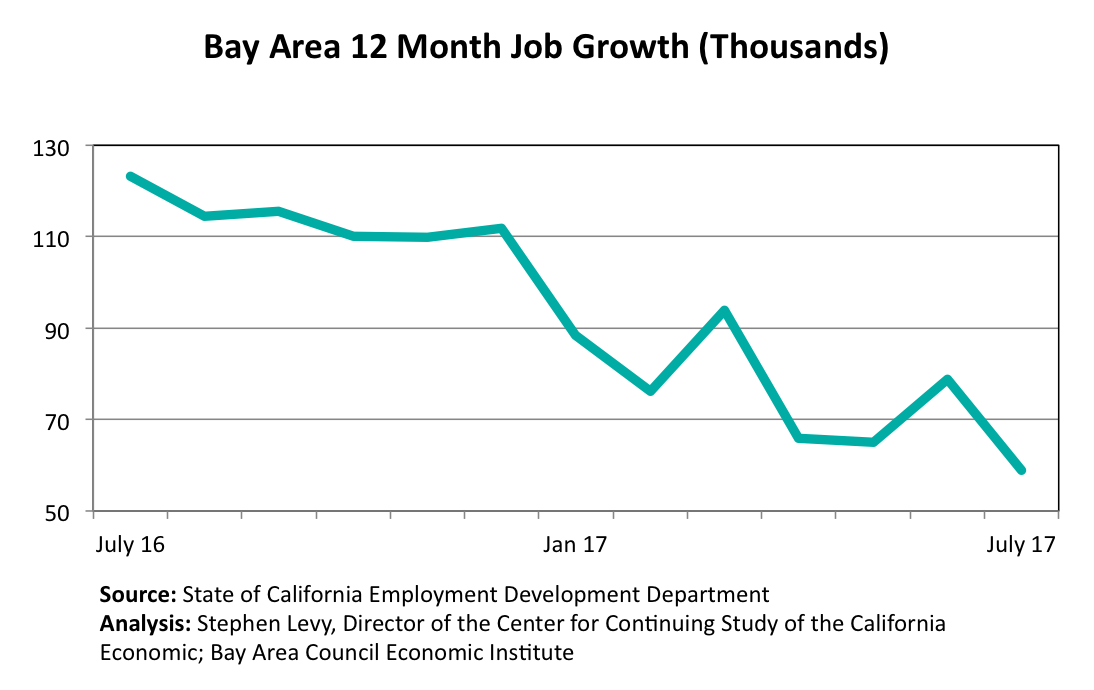
The California Employment Development Department (EDD) has released job and labor force estimates for July 2017. Here are the highlights.The California Employment Development Department (EDD) has released job and labor force estimates for July 2017. Here are the highlights:
- Job growth in the Bay Area surged in July but last July was even stronger so year over year growth declined.
- The region’s labor force fell over the past year with job gains coming from a decline in unemployment, already near record low levels.
- Major companies continue to announce expansion plans.
- Housing permits are surging in the three largest counties.
A Job Rebound Accompanied by a Shrinking Labor Force
Job growth has slowed over the past year though June and July brought a strong rebound and the region again outpaces the state and nation but slightly. The Bay Area lagged the state job growth rate for the first time in several years in July.
Job growth is slowing throughout the region. For the past 12 months only the Oakland, San Francisco, Napa and Vallejo metro areas have added jobs at a faster pace than the nation. Year over year job growth reached a low of 58,900 in July well below the 100,000+ levels of recent years. EDD data show that the region added more than 20,000 jobs seasonally adjusted in July but that was below the more than 25,000 jobs added in July 2016 though more estimates seem high and may be affected by problems in the seasonal adjustment process.
At the same time unemployment rates are still falling though the pace of decline has slowed as rates are already low. The June and July rates are higher than normal as a result of school closings for the summer but the year over year trends show the continuing decline.
While unemployment and unemployment rates have declined, labor force growth has shrunk with 5,900 fewer workers than a year ago. This has created a very tight labor market where finding workers has become more difficult. Job growth cannot continue without positive labor force growth, which is tied to the region’s efforts to provide more housing at a range of affordability.
Job growth levels have declined sharply since last July from near 125,000 on a year over year basis to roughly half that level.
 But there is more positive news with regard to expanding our housing supply. Housing permits are up for the first part of the year but more are needed. Shortly the Legislature will vote on a number of housing bills dealing with funding for housing for low-income residents and some beginning steps on streamlining and speeding up the approval process. More housing is being proposed around the new BART stations and the planned job expansions in downtown San Jose will bring more housing.
But there is more positive news with regard to expanding our housing supply. Housing permits are up for the first part of the year but more are needed. Shortly the Legislature will vote on a number of housing bills dealing with funding for housing for low-income residents and some beginning steps on streamlining and speeding up the approval process. More housing is being proposed around the new BART stations and the planned job expansions in downtown San Jose will bring more housing.
The next needed steps involve lowering the cost of building new housing, changing zoning to allow more and less expensive housing to be built and, hopefully, state funding to offset some costs of housing so that cities get the funds but some of the fees and infrastructure costs do not have to be added to the cost and price/rental rate of the new housing.
